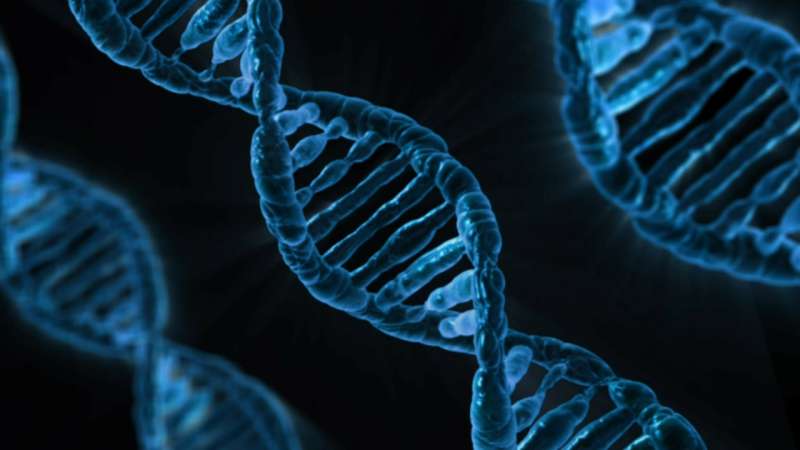This article has been reviewed according to Science X's editorial process and policies. Editors have highlighted the following attributes while ensuring the content's credibility:
fact-checked
peer-reviewed publication
trusted source
proofread
Researchers identify female sex determining gene in mice

Researchers at the Francis Crick Institute and the Université Cote d'Azur, together with other labs in France and Switzerland, have identified a gene which is an early determining factor of ovary development in mice.
Typically, mice with XY sex chromosomes develop testes, and mice with XX chromosomes develop ovaries. Whether early gonads become ovaries or testes is due to cells either becoming Sertoli cells for testes, or pregranulosa cells for ovaries. This decision results from the coordinated activity of a set of genes, such as the Sry gene on the Y chromosome which has a short window of time to drive testes development. If this doesn't happen, the gonads default to become ovaries.
In research published today in Science, the team investigated the role of another gene, Wt1, in sex development in mice. They produced mice with genetic alterations in this gene to understand its effect.
They found that one form of the WT1 protein (-KTS) was essential to gonad formation, as in its absence, neither Sertoli cells nor granulosa cells could form in both XY and XX mice.
They then looked at mice where Wt1 was mutated to only make the -KTS form of the protein. Here the researchers saw that twice as much -KTS was produced to compensate for the lack of other forms of the protein.
The higher amounts of -KTS reduced the expression of Sry in XY gonads and increased genes involved in ovarian development. The production of SRY never reached the level needed to trigger testes development.
This meant that an XY mouse developed female gonads in the presence of too much -KTS, showing that the -KTS form of WT1 is an early trigger for female gonad development, regardless of XX or XY chromosomes.
In humans, mutations in WT1 can lead to Frasier syndrome, which causes impaired kidney function and gonad development. It impacts people with both XX and XY chromosomes, but notably leads to ovaries in people with XY chromosomes, although these degenerate prior to birth.
Robin Lovell-Badge, Group Leader of the Stem Cell Biology and Developmental Genetics Laboratory at the Crick, said, "We have known about Wt1 and its variants for a long time, but the true role of the -KTS version has been hiding in plain sight until now. This discovery should help us understand the very early stages of gonad development when critical decisions that affect not only the fate of the gonad, but the sex of the rest of the body, take place in just a few cells."
Marie-Christine Chaboissier, group leader in the Institut de Biologie Valrose, at the Université Cote d'Azur, said, "When Sry, the testis determining gene, was identified in the early nineties, it was hoped that the other main players involved in the choice of making testes or ovaries would rapidly emerge."
"But although many other genes required have gradually fallen into place, it has taken until now, with a collaborative effort involving five European teams, to find an equivalent master ovarian determinant. It is perhaps a little ironic that this long-sought factor is a variant of the Wt1 gene which was also described at the same time, however, with the complexity of the gene and the system, we needed the modern tools of molecular genetics to obtain the proof."
Elodie Gregoire, a senior scientist ('ingenieure d'études') in the Chaboissier lab at Université Cote d'Azur, said, "Because the -KTS variant of WT1 acts so early, it represents an ideal entry point to decipher the regulatory gene networks involved in initiating ovary development, which may in turn help to identify the molecular and genetic basis of spontaneous or unexplained disorders of sex development."
As well as fulfilling an important piece of the puzzle for sex determination, this discovery will help researchers understand how WT1 acts in other systems, like kidney development and Wilms tumor, a type of kidney cancer. It may also give clues to the mechanisms underlying how cell fate is decided more generally.
More information: Elodie P. Gregoire et al, The -KTS splice variant of WT1 is essential for ovarian determination in mice, Science (2023). DOI: 10.1126/science.add8831. www.science.org/doi/10.1126/science.add8831
Journal information: Science
Provided by The Francis Crick Institute





















